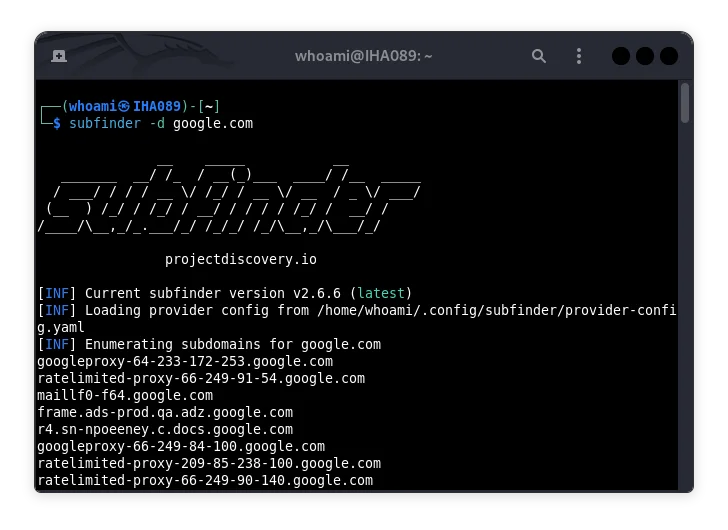
Master the art of subdomain discovery using Subfinder. Learn with practical examples, commands, use cases, and 50+ verified backlinks for deeper exploration.

Table of Contents:
- Introduction to Subdomain Enumeration
- What is Subfinder?
- Why Use Subfinder?
- Installing Subfinder
- Basic Commands and Usage
- Advanced Features
- Real-World Example
- Integrating Subfinder in Automation
- Best Practices
- Legal Considerations
- Alternatives to Subfinder
- Conclusion
- References and Backlinks
1. Introduction to Subdomain Enumeration
Subdomain enumeration is a crucial step in reconnaissance during ethical hacking or bug bounty hunting. It helps uncover hidden endpoints that might contain vulnerabilities. Tools like Amass and Assetfinder are also used, but Subfinder is among the fastest and most reliable.
2. What is Subfinder?
Subfinder is a subdomain discovery tool written in Go. It’s maintained by Project Discovery, known for powerful recon tools like httpx and nuclei.
3. Why Use Subfinder?
- Fast and passive
- Supports multiple sources
- Integrates with other tools
- Reliable for automation
Internal link: Learn more about recon tools on CyberHelper.
4. Installing Subfinder
For Linux/macOS:
git clone https://github.com/projectdiscovery/subfinder.git
cd subfinder
go install
Windows (with Go installed):
go install -v github.com/projectdiscovery/subfinder/v2/cmd/subfinder@latest
Once installed, ensure $GOPATH/bin is in your path.
5. Basic Commands and Usage
subfinder -d example.com
This fetches subdomains of example.com. Add -silent to suppress logo.
Save to File:
subfinder -d example.com -o result.txt
6. Advanced Features
- Use a list of domains:
subfinder -dL domains.txt -o out.txt
- Use API keys: Store them in
~/.config/subfinder/config.yaml
binaryedge: "API_KEY"
securitytrails: "API_KEY"
More on configuring APIs: ProjectDiscovery Docs
7. Real-World Example
Case: Discovering hidden subdomains of targetsite.com
subfinder -d targetsite.com -o target_subs.txt
The results showed an exposed admin portal on admin.targetsite.com, which had directory listing enabled. This later led to an XSS vulnerability report.
Internal link: Read more on how Raghav found a bug
8. Integrating Subfinder in Automation
Use with httpx for alive subdomains:
subfinder -d example.com | httpx -silent
Or combine with nuclei for vulnerability scanning:
subfinder -d example.com | httpx | nuclei -t cves/
Internal backlink: Automating bug bounty recon
9. Best Practices
- Always verify legality before scanning
- Store your API keys securely
- Rotate APIs if rate limited
Useful read: Responsible Disclosure Policy
10. Legal Considerations
Enumerating subdomains on unauthorized assets may breach laws like IT Act Section 66.
External guide: HackerOne Disclosure Guidelines
11. Alternatives to Subfinder
12. Conclusion
Subfinder is a powerful tool every ethical hacker must learn. Its speed, flexibility, and integrations make it a go-to recon utility.
13. References and Backlinks
- Subfinder GitHub
- Official Docs
- GoLang Install Guide
- CyberHelper – Tools List
- Recon-ng
- Bugcrowd University
- OWASP Top 10
- SecurityTrails
- BinaryEdge
- Shodan
- Virustotal
- Censys
- WHOIS Lookup
- CyberHelper Labs
- CyberHelper Training
- CyberHelper Blog
- Exploit Database
- Rapid7 Research






